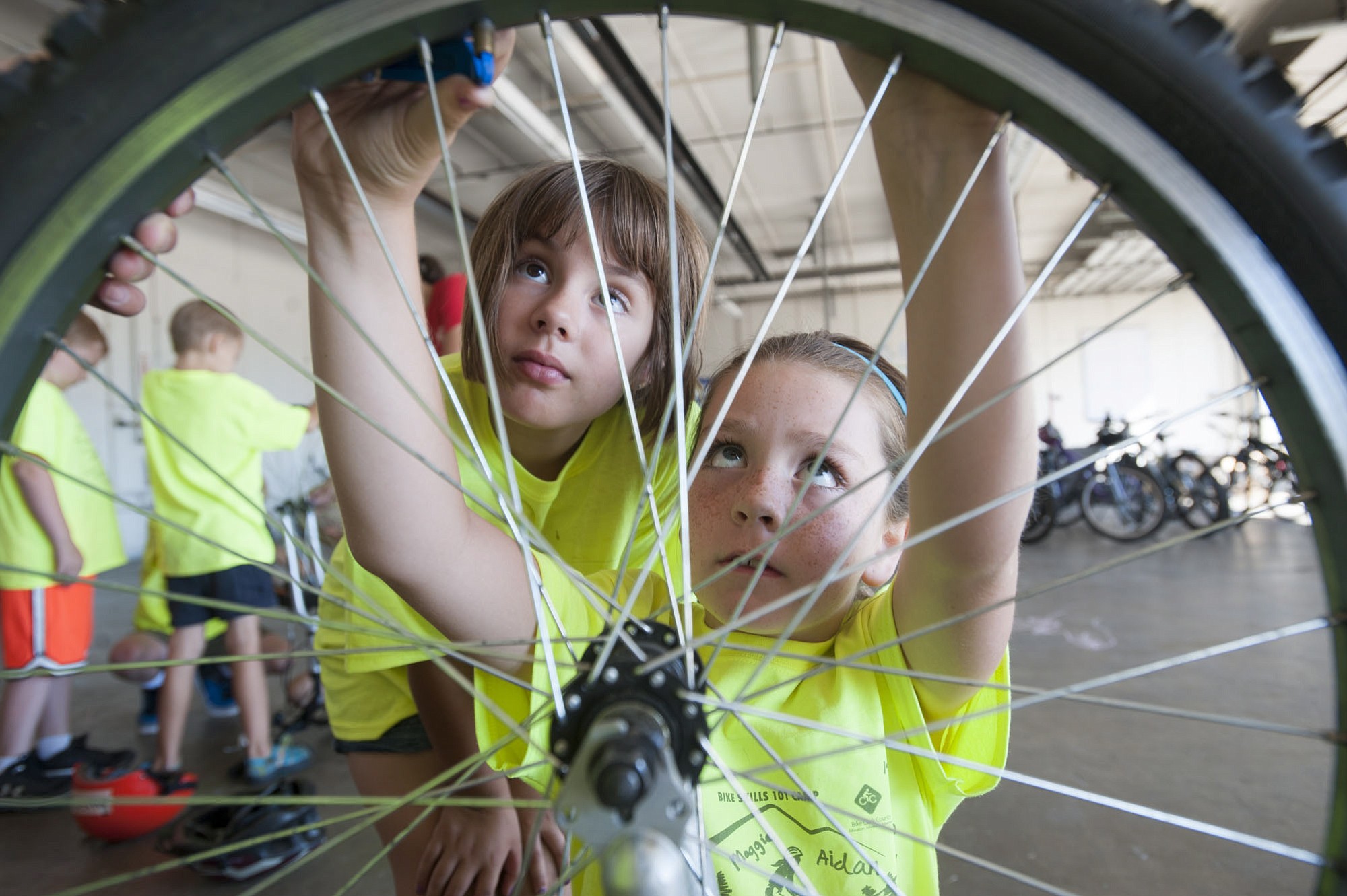Bike Clark County’s website includes bike-safety resources for parents and children. The group also offers bike-safety courses for local middle schools.
www.bikeclarkcounty.org
- “Bicyclists should ride facing traffic.” Riding against traffic causes about one-quarter of all vehicle vs. bike collisions. Pedestrians walk against traffic but bikes should always ride in the same direction as traffic. Drivers aren’t expecting a bike coming at them in their own lane.
- “A child needs a bike to grow into.” A bike that’s too big means wobbling and weaving. A child must be able to control the bike and act quickly. Can your child stand straddling the bike with both feet flat on the ground?
- “My child needs a 21-speed mountain bike.” Few young children can work standard handbrakes or confusing gear shifters while steering and pedaling. For your child’s first bike, choose a sturdy one-speed with a coaster (foot) brake.
- “Our neighborhood is quiet, so we don’t have to worry.” As with vehicle crashes, many bike crashes happen on mellow two-lane residential streets — largely because that’s where kids live and cycle. Familiarity can lead to carelessness.
Source: Bike Clark County
The best-case scenario is that all these skilled young cyclists go home and train their parents with their new knowledge. That way, whole families can enjoy the beauty of safe cycling this summer, and into the future.
“You get a whoosh of excitement and the wind flies in your face,” said Isabel Kovacs. Install a basket, added her sensible sister, Magdalene, and you can accomplish useful things such as going to the grocery store. The Kovacs sisters are looking forward to all that and more, they said, now that they’ve brushed up on traffic safety as well as some basic bike maintenance at Bike 101, the city of Vancouver’s first-ever day camp of its kind.
Eric Giacchino, the founder and president of advocacy and educational group Bike Clark County, said there’s a sadly simple reason why too many kids don’t go cycling: their parents don’t know how to fix flat tires. So the bike “just sits in the garage,” he said. And maybe the kids just sit too.
Giacchino was the driving force behind Bike 101, which he started discussing with the city a year ago. A professional firefighter-paramedic as well as a “total bike guy,” Giacchino is a passionate advocate for bike safety training partially because he’s been called to too many emergency scenes that involved a young person on a bike. He’s been particularly shaken this summer, he said, because the child of close friends of his recently got into a bad bike accident.
“If I cannot keep my friends’ children safe, are we really doing everything we can? Never has it been more important to me,” he said.
So Giacchino was all smiles Wednesday morning as he stopped by the Bike 101 day camp and watched 20 kids, ages 6 through 14, wheel around a parking lot practicing some safety-scanning — that means watching out for cars all around you, including over your shoulder, and signaling properly before making a turn in traffic — and then take in a hands-on lesson in repairing or replacing a punctured tire tube. Later in that day, camp assistant Tommy Rhodes said, the kids would go on a guided group ride to a destination on or around the Fort Vancouver campus, such as the visitors’ center playground or Pearson Air Museum — where, Giacchino pointed out, there happens to be an exhibit about the Wright Brothers, “only the most famous bicycle builders in the world.”
The fort has been a key partner in making Bike 101 a reality, Giacchino said. The National Park Service, which runs the fort, volunteered what Giacchino considers the ideal location: a big empty vehicle storage building on East Fifth Street that’s yards from the pedestrian path where these kids can practice their new cycling skills.
Bike Clark County also trained city staff on the bike-safety curriculum — which was drawn from two national groups, the League of American Bicyclists and Safe Routes to School — and provided them with helmets to give away and donated bikes that kids without their own could borrow for the week. The city hired staff to make the day camp happen.
The fort even spent a few thousand bucks cleaning out the building and getting it ready for bike day camp, Vancouver fitness coordinator and camp overseer Heidi Marshall said. Given all that good help and planning, Marshall and Giacchino were worried when registration for Bikes 101 started off slowly. With the program winding down now, though, they’re satisfied to have enrolled approximately 80 kids across four weeks, and are hoping next year’s registrations allow them to break the group into two — one up to age 10 and one for kids 11 and older.
Maybe there even could be classes for adults, Giacchino said — because they apparently need the training just as much as their kids do.
“It’s a good feeling to know what we’re doing is helping them be safe and be active,” said Bike 101 lead instructor Hannah Busskohl.




